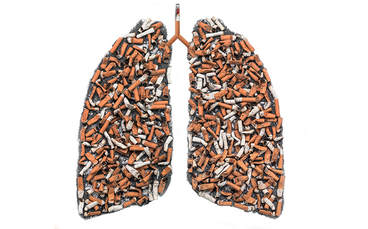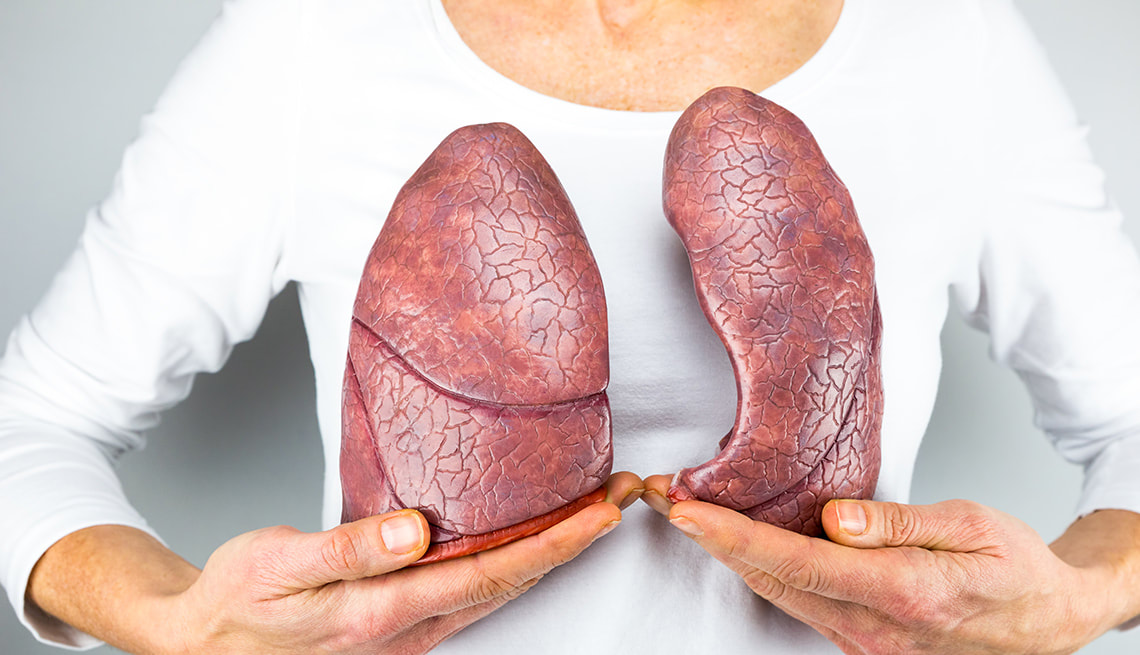|
Lung Cancer Awareness Month (November 1st-November 30th)  Stop Smoking. Save Yourself from Lung Cancer Stop Smoking. Save Yourself from Lung Cancer Respiratory Anatomy Breathing is the crux of human existence and lungs are the primary organs of the respiratory system which also comprise of airways, blood vessels and muscles that help a person breathe. Lungs help to breathe in oxygen and breathe out carbon dioxide from the body. Termed as ‘gas exchange’ this is a vital element of breathing. Alongside gas exchange, the respiratory system also performs other important functions that support breathing such as:
Humans are blessed with two lungs-the right and left lung each having distinct characteristics. The right lung is divided into three lobes and the left lung into two lobes. These lobes are like balloons that are filled with sponge-like tissue. Each lung is surrounded by pleura-membranes that surround each lobe of the lungs. Air enters our body primarily through the nose but can also enter through our mouth if we are accustomed to breathing through our mouth. This air enters the throat which passes it to the trachea or wind pipe. Trachea is composed of two bronchial tubes that enter each lung which are again divided at the lobes of the lung. The tiniest of the bronchial branches are called bronchioles which are comprised of air sacs or alveoli. Though small, the air sacs enable exchange of oxygen and carbon dioxide. Walls of the alveoli are comprised of capillaries (blood vessels) through which blood passes entering via the pulmonary artery and leaving via the pulmonary vein. In the capillaries, blood pushes carbon dioxide into the alveoli and takes oxygen from air in the alveoli. Complexity Involved Breathing is a complex process which can be greatly disturbed owing to the presence of infections, injuries, diseases and other factors. Lung Cancer Lung cancer is the leading cause of cancer death worldwide but shows no symptoms until later stages. Absence of much symptoms is due to the presence of restricted number of pain receptors in the lungs. Lung cancer is commonly present among the older generation, specifically amongst people belonging to the 70-74 age group. Individuals younger than 40 face the least risk of the disease. Although it can occur in anyone, smoking is the primary cause (more than 85%) of this cancer owing to the various toxic substances that are inhaled. Symptoms The symptoms of lung cancer vary depending on the type of lung cancer and the placement and size of the tumor. Common symptoms include:
Cancer that starts in the lungs is called as primary lung cancer and one that starts elsewhere and spreads to the lungs from another place in the body is called as secondary lung cancer. There are three main types of lung cancer namely: Small cell lung cancer: Almost 10-15% of lung cancers belong to this category and falls under primary lung cancer. It spreads quickly compared to the rest of the types. Non-small-cell lung cancer: Almost 85% of lung cancers belong to this category making it the most common type present universally. Lung carcinoid tumor: This is the least-present type of amounting to lesser than 5% of the total lung cancer statistics. These tumors grow slowly and rarely do they spread. Treatment Treatment purely depends on the stage of diagnosis, type of cancer and how far the disease has spread. When the cancer is confined to a small area which means that it has been diagnosed early, surgery is the preferred option where the portion of the affected lungs are removed surgically. When health conditions don’t permit surgery, radiotherapy is the suggested option for treatment. Chemotherapy is introduced to the patient only if the cancer has spread too much making surgery or radiotherapy an ineffective option. Diagnosis plays a very important role in treatment and survival rates. Only 1 in 20 people live for at least 10 years diagnosis while 1 in 3 people live at least for a year for sure after diagnosis. Prevention The best way to prevent lung cancer is to stop smoking (if you smoke) as this is the primary cause of the disease. Even if you have been a heavy smoker until now, your chance of acquitting the disease reduces once you stop it. After some 10 years of quitting, the chances of developing lung cancer decrease by almost 50%. When such are the advantages of quitting, why can’t we think about it seriously? Read more about the side effects of smoking and the advantages that tag along once a person quits smoking from the website www.firsteatright.com. Eat healthy: Keep your lungs healthy by eating nutritious and wholesome food. Include five portions of fresh fruits and vegetables daily, choose whole grains, eat foods that are high in fiber diet, low in fat and rich in nutrients. Physical activity: Exercising regularly decreases the risk of lung cancer in fact, any type of cancer. Indulge in at least 150 minutes of moderate-intensity exercise every week which amounts to at least 30 minutes of exercise five days a week. Comments are closed.
|
AVOID FRAUD. EAT SMART.+91 7846 800 800
AuthorDietitian & Nutritionist Dr. Nafeesa Imteyaz. Archives
July 2024
Categories
All
Dr. Nafeesa's Blog @blogspot |
- Home
- Written Testimonials
- Consult
- Clinics
- Blogs
-
Diet & Nutrition
- Diabetes Reversal
- IVF IUI not needed for PCOS PCOD Infertility
-
Medical Nutrition
>
-
Disease & Conditions
>
- Infertility | PCOS
- Diabetes Mellitus
- Cholesterol
- Hypothyroid
- Kidney Problems
- Hypertension
- Cardiovascular Diseases
- Liver Diseases
- Gastro intestinal disorder
- Cancer
- Metabolic Disorders
- Orthopedic Disorders
- Eating Disorders
- Dietary Recall
- Weight Record Filled By Clients
- Online Payment Transaction Details
- Online Clients Weight Check Form
- Our Program Package Service Charges
- Weight Record 2017 Clients
- Measurements sent by Clients
- Terms & Conditions Of Payment
- Thanks. Your Form is Submitted
- Video Testimonials
- Lifestyle & Wellness
- Lifestyle & Wellness Blog
- Allergy & Intolerance
- Weight Loss / Gain
- Weight Loss / Slimming Blog
-
Disease & Conditions
>
- Life Cycle Nutrition >
- Sports Nutrition >
- Integrity in Nutrition
- Knowledge Centre
© COPYRIGHT 2022. ALL RIGHTS RESERVED. FRST HEALTHCARE PVT LTD.
Dr. Nafeesa Imteyaz of First Eat Right clinic, is the Best Dietitian Nutritionist in Bangalore. Best Dietitian Nutritionist in Pune. Best Dietitian Nutritionist in Hyderabad. Best Dietitian Nutritionist in Chennai. Best Dietitian Nutritionist in Mumbai. Best Dietitian Nutritionist in Delhi. Best Dietitian Nutritionist in Kolkata.


